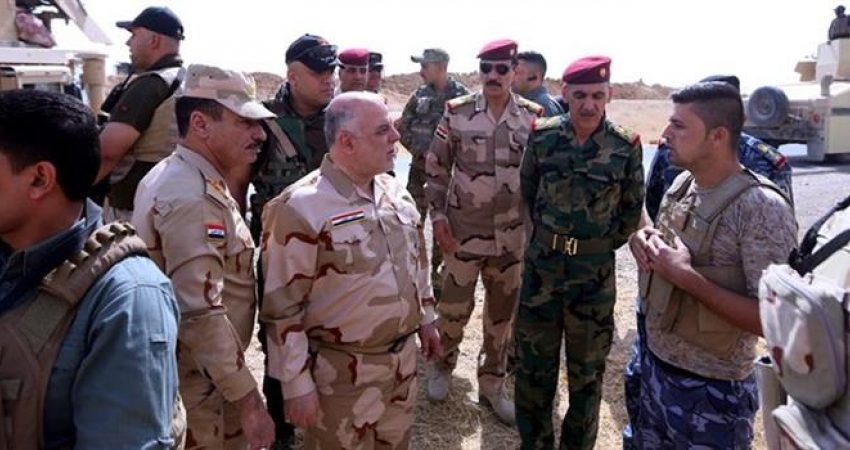Iraqi PM declares “the end of the Daesh state of falsehood” after capture of Mosul mosque

Iraqi Prime Minister Haider al-Abadi while checking on the security troops in Mosul.

“The return of al-Nuri Mosque and al-Hadba minaret to the fold of the nation marks the end of the Daesh state of falsehood,” Abadi said in a statement, referring to the ultra-hardline Sunni group by an Arabic acronym.
He said Iraqi forces would continue to hunt Islamic State’s fighters “to kill them and detain them, down to the last one”.
The insurgents blew up the medieval mosque and its famed leaning minaret a week ago as U.S.-backed Iraqi forces advanced towards it. Their black flag had been flying from al-Hadba (The Hunchback) minaret since June 2014.
Iraqi authorities expect the long battle for Mosul to end in the coming days as the remaining Islamic State fighters are now bottled up in just a handful of neighborhoods of the Old City.
The seizure of the 850-year-old Grand al-Nuri Mosque is a huge symbolic victory for the Iraqi forces fighting to recapture Mosul, which had served as Islamic State’s de facto capital in Iraq.
“Their fictitious state has fallen,” an Iraqi military spokesman, Brigadier General Yahya Rasool, told state TV.
The insurgents blew up the medieval mosque and its famed leaning minaret a week ago as U.S.-backed Iraqi forces started a push in its direction. Their black flag had been flying from al-Hadba (The Hunchback) minaret since June 2014.
Prime Minister Haider al-Abadi “issued instructions to bring the battle to its conclusion,” his office said.
The fall of Mosul would in effect mark the end of the Iraqi half of the IS caliphate even though the hardline group would still control territory west and south of the city. Its capital in Syria, Raqqa, is also besieged by a U.S.-backed Kurdish-led coalition.
About 900,000 people, nearly half the pre-war population of the northern city, have fled the battle, mostly taking refuge in camps or with relatives and friends, according to aid groups.
The military estimated up to 350 militants were still in the Old City last week but many have been killed since.
They are besieged in one sq km (0.4 square mile) making up less than 40 percent of the Old City and less than one percent of the total area of Mosul, the largest urban center over which they held sway in both Iraq and Syria.
Baghdadi proclaimed himself “caliph,” or ruler of all Muslims, from the Grand al-Nuri Mosque’s pulpit on July 4, 2014, after the insurgents overran vast swathes of Iraq and Syria.
His speech from the mosque was the first time he revealed himself to the world and the footage broadcast then is to this day the only video recording of him as “caliph”.
He has left the fighting in Mosul to local commanders and is believed to be hiding in the border area between Iraq and Syria, according to U.S. and Iraqi military sources.
Islamic State last week broadcast a video showing much of the mosque and brickwork minaret reduced to rubble. Only the stump of the Hunchback remained, and a dome of the mosque supported by a few pillars which resisted the blast.
The mosque was named after Nuruddin al‑Zanki, a noble who fought the early Crusaders from a fiefdom that covered territory in modern-day Turkey, Syria and Iraq. It was built in 1172-73, shortly before his death, and housed an Islamic school.
The Old City’s stone buildings date mostly from the medieval period. They include market stalls, a few mosques and churches, and small houses built and rebuilt on top of each other over the ages.
